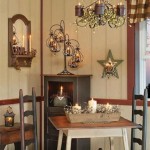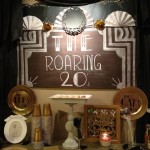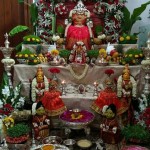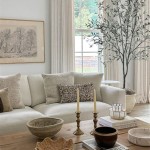How to Decorate Your Living Room for a Wedding
Transforming a living room into a wedding-worthy space requires careful planning and execution. The aim is to create an atmosphere that reflects the celebratory nature of the event while catering to the logistical needs of hosting guests. From selecting a cohesive color palette to optimizing space, numerous factors contribute to a successful living room wedding decoration.
This article provides a comprehensive guide to decorating a living room for a wedding, covering essential aspects from initial planning to final touches. It aims to offer practical advice and actionable steps that can be adapted to various living room sizes and personal preferences. The intention is to provide information that allows hosts to create a memorable and visually appealing space for their wedding celebration.
Planning and Preparation
Effective wedding decoration begins with meticulous planning. This stage allows for the establishment of a clear vision and the identification of potential challenges. Successful preparation ensures a smoother execution and minimizes the risk of last-minute complications.
The first step is to determine the overall theme and style of the wedding. Is it a formal, traditional affair or a more relaxed, bohemian gathering? The chosen theme will dictate the color palette, the types of decorations, and the overall ambiance of the living room. Consider the existing décor of the living room and how it can be integrated or adapted to the wedding theme. If the existing décor clashes significantly, consider temporary solutions such as draping fabric or rearranging furniture.
Next, assess the size and layout of the living room. Take accurate measurements and create a floor plan to visualize how the space will be used. Identify key areas such as the ceremony space, the reception area, and any designated spaces for food, drinks, or gifts. This will help determine the amount of space available for decorations and furniture arrangements. Pay particular attention to potential bottlenecks and ensure that guests can move freely around the room. Consider accessibility for guests with mobility issues.
Develop a budget and allocate funds for different decoration elements. Prioritize essential items such as seating, lighting, and floral arrangements. Explore cost-effective alternatives where possible. For instance, renting decorations or crafting DIY elements can significantly reduce expenses. Regularly track expenses to ensure adherence to the budget. It is also crucial to create a timeline for completing each task. This timeline should include deadlines for ordering supplies, crafting DIY decorations, and setting up the living room. A well-defined timeline will help avoid procrastination and ensure that everything is completed on time.
Consider the time of day the wedding will take place. Daytime weddings may require less artificial lighting, while evening weddings will necessitate more ambient and decorative lighting. Also, consider the weather. If it's a warm day, ensure adequate ventilation or air conditioning. If it's a cold day, consider providing blankets or throws for guests to use.
Decorating Elements and Techniques
Once the planning phase is complete, the next step is to select and implement the various decorative elements. The choice of these elements and the techniques used to arrange them will significantly influence the overall look and feel of the living room.
Color plays a crucial role in setting the mood. Choose a color palette that complements the wedding theme and the existing décor of the living room. A cohesive color scheme will create a sense of harmony and visual appeal. Common wedding color palettes include classic white and gold, romantic pastels, and modern jewel tones. Consider incorporating accent colors through flowers, linens, and decorative accessories. Use color strategically to highlight key areas or create focal points within the room.
Lighting is another essential element that can dramatically transform the ambiance of the living room. Utilize a combination of natural and artificial light to create a warm and inviting atmosphere. String lights, candles, and lanterns can add a romantic touch, while uplighting can highlight architectural features or decorative elements. Consider using dimmers to adjust the intensity of the lighting and create different moods throughout the wedding. Ensure that the lighting is adequate for guests to see and move around safely.
Floral arrangements are a classic wedding decoration. Choose flowers that complement the color palette and the wedding theme. Consider using a variety of flower types and sizes to create visually interesting arrangements. Place floral arrangements strategically throughout the living room, such as on tables, mantels, and windowsills. Consider using non-floral elements such as greenery, branches, and decorative grasses to add texture and visual interest. For a more sustainable option, consider using potted plants or dried flowers.
Fabric and textiles can add texture and visual interest to the living room. Use tablecloths, runners, and napkins to dress up tables. Draping fabric from the ceiling or walls can create a dramatic effect. Consider using different textures and patterns to add depth and dimension to the décor. Use fabrics to soften hard surfaces or create visual barriers. Adding throw pillows to sofas and chairs makes the seating arrangements more comfortable and aesthetically pleasing.
Personal touches can make the wedding feel more special and memorable. Incorporate personal photos, mementos, or handmade decorations. Display photos of the couple throughout their relationship. Consider creating a memory table with photos of loved ones who are no longer present. Incorporating DIY decorations can add a personal touch and save money. Personal touches also include displaying the couple's favorite books, artwork, or other collectibles.
Space Optimization and Functionality
Beyond aesthetics, the functionality of the living room is paramount for a successful wedding. Optimizing space and ensuring a comfortable experience for guests is essential. Careful consideration of seating arrangements, traffic flow, and amenities will contribute to a smooth and enjoyable event.
Arrange furniture to maximize space and create a comfortable flow for guests. Consider removing unnecessary furniture to open up the room. Arrange seating in a way that encourages conversation and interaction. Create designated areas for different activities, such as the ceremony, reception, and gift table. Ensure that there is ample space for guests to move around without feeling crowded. Consider using multi-functional furniture such as ottomans with storage or foldable tables.
Provide adequate seating for all guests. Consider using a mix of seating options, such as sofas, chairs, and benches. Arrange seating in groups to encourage conversation. Ensure that there are enough chairs for guests to sit during the ceremony. Consider providing cushions or blankets for added comfort. Incorporating different heights of seating, such as floor cushions, creates a casual feel and visually interesting layering.
Create a designated area for food and drinks. If space is limited, consider using a buffet-style arrangement. Ensure that the food and drinks are easily accessible to all guests. Provide plenty of napkins, plates, and utensils. Consider using disposable tableware to simplify cleanup. Also, provide proper garbage and recycling bins throughout the room.
Ensure that the living room is well-ventilated and at a comfortable temperature. Open windows or use fans to circulate air. Adjust the thermostat to a comfortable temperature. Consider providing water or other beverages to keep guests hydrated. Add air fresheners or scented candles for a pleasant atmosphere.
Consider the needs of guests with mobility issues. Ensure that the living room is accessible to wheelchairs and walkers. Provide ramps or assistance for guests who have difficulty navigating stairs. Designate a quiet area for guests who need a break from the noise and activity. Offer assistance to guests who need it. Providing clear signage throughout the room can help guests navigate easily.
Pay attention to small details that can enhance the overall experience. Provide coat racks or hangers for guests to store their belongings. Offer umbrellas in case of rain. Have a first-aid kit on hand in case of emergencies. Ensure that the restrooms are clean and well-stocked. These small touches demonstrate attention to detail and create a welcoming atmosphere for guests during the wedding celebration.

9 Unique Decor Ideas For A Wedding At Home Designcafe

Very Small Intimate Home Wedding In Our Living Room Reception At Ceremony Decorations Indoor

At Home Wedding Guide And 21 Examples Weddingomania

Ceremony Love That It Looks Like Is In Someone S Living Roo Wedding Backdrop Indoor Winter Decorations

A Living Room Wedding Best Blog

9 Unique Decor Ideas For A Wedding At Home Designcafe

At Home Wedding Guide And 21 Examples Weddingomania

9 Unique Decor Ideas For A Wedding At Home Designcafe

A Living Room Wedding Best Blog

9 Unique Decor Ideas For A Wedding At Home Designcafe
Related Posts







